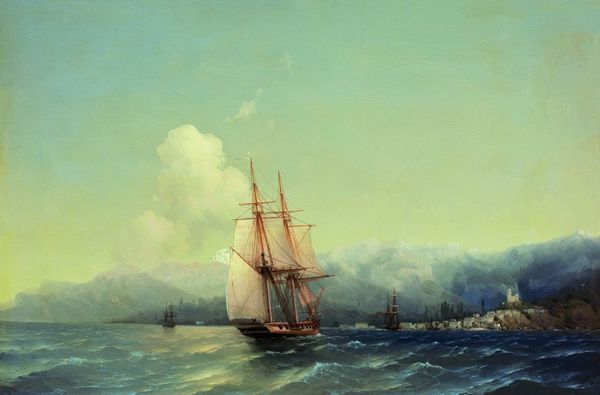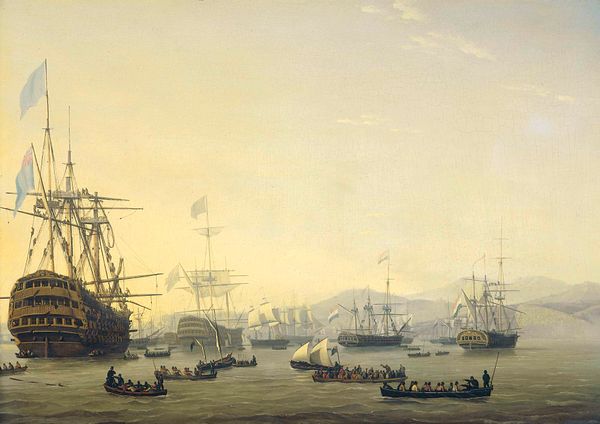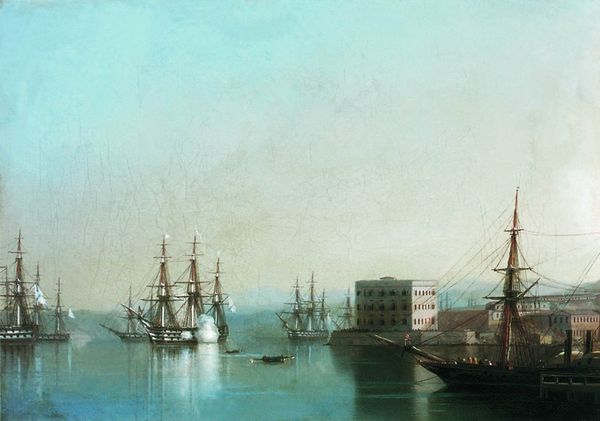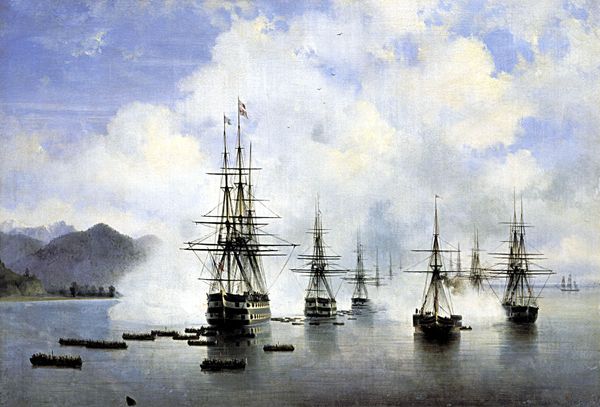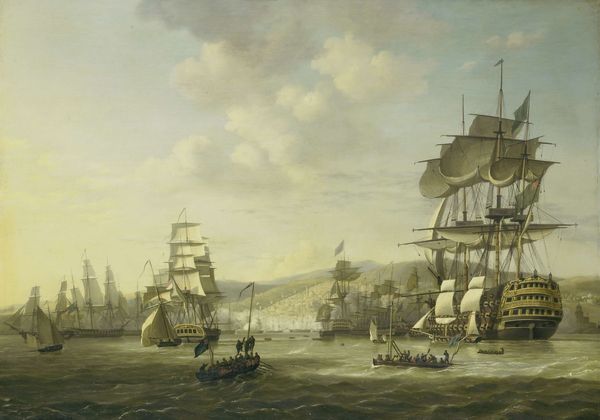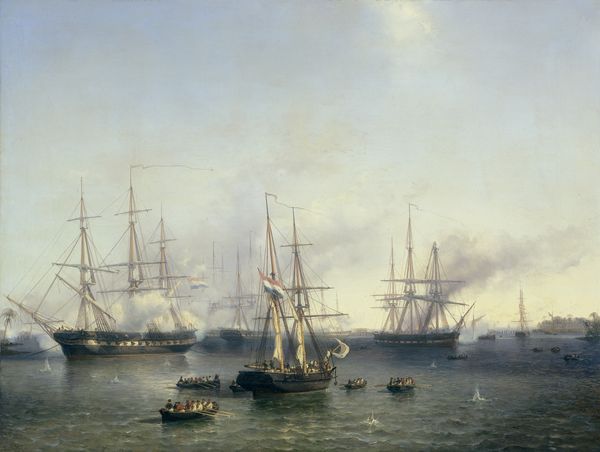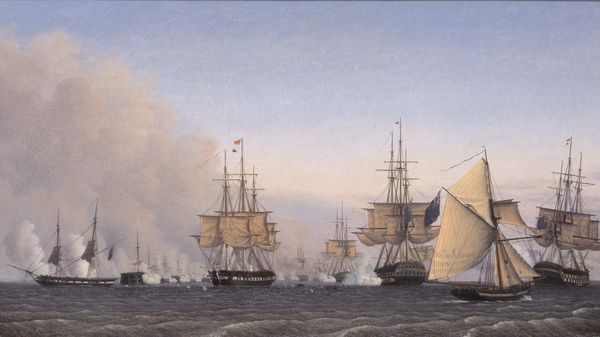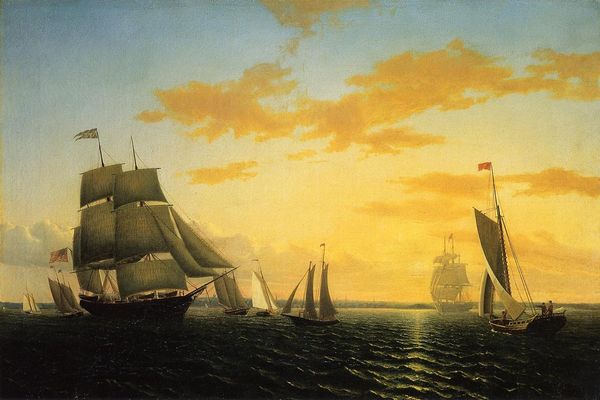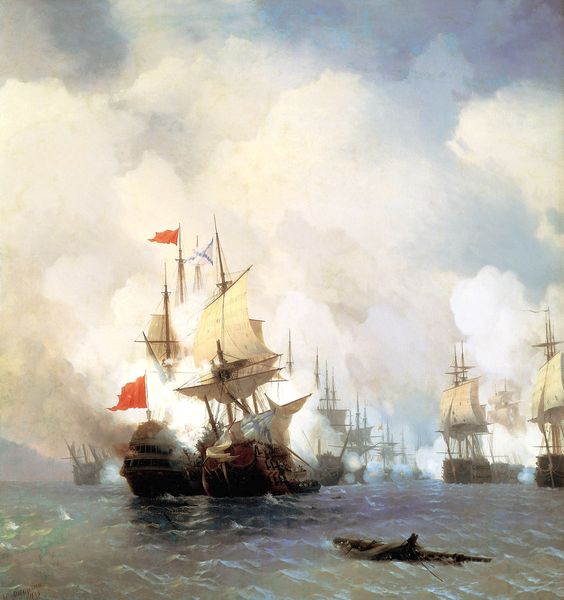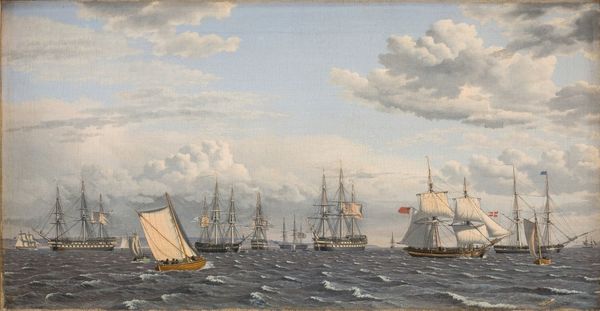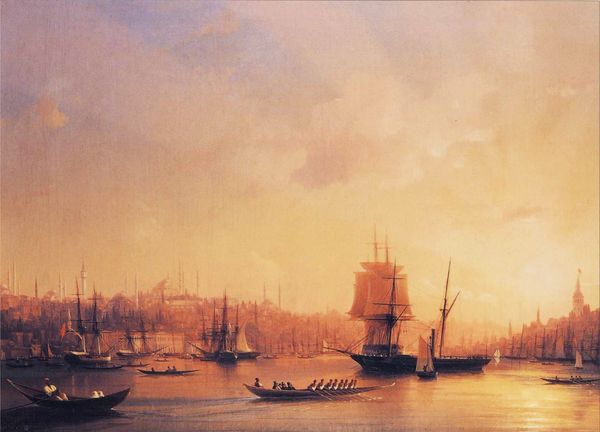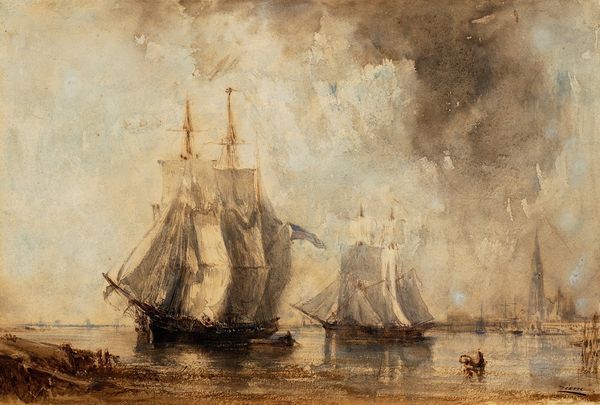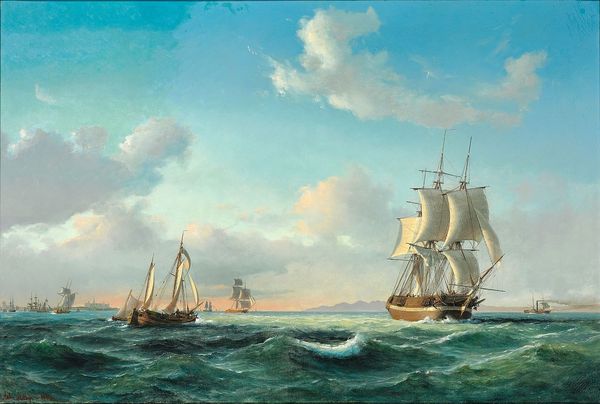
The Black Sea Fleet in Feodosia Bay before the Crimean War 1890
0:00
0:00
ivankonstantinovichaivazovsky
Aivazovsky National Art Gallery, Feodosiya, Ukraine
Dimensions: 53 x 107 cm
Copyright: Public domain
Curator: It’s quite striking, isn't it? A very serene, almost idyllic image despite the subject matter. I find myself drawn to the ships in the distance – there's something ghostly about their presence on the horizon. Editor: It is indeed, even deceptively so. What we're looking at is "The Black Sea Fleet in Feodosia Bay before the Crimean War," painted by Ivan Aivazovsky in 1890. These are warships gathering right before a conflict that reshaped power dynamics in Europe. It makes you think about how imperial ambitions are often obscured, particularly in seascapes during this era. Curator: Absolutely. The Romantic tradition often overlooks such inconvenient realities. The lighting is doing a lot of work here. The artist uses it to emphasize the grandeur of the scene, almost glossing over the violence these ships are meant to enact. Where does Aivazovsky situate himself in relation to Russian militarism in creating this work? Editor: A complex question! Aivazovsky had a long, complicated relationship with the Russian military and empire. He held a position as an official painter for the Navy, benefiting from patronage while also using his art to shape national identity and celebrate Russian power. These paintings reinforce specific ideas about national identity by romanticizing Russian military strength at a crucial historical juncture. Curator: So, this idyllic vision serves a purpose beyond mere aesthetics; it reinforces the might of the fleet and the empire it represents. I wonder, what does this sanitization of warfare tell us about the construction of narratives, even artistic ones? How does this historical depiction of maritime power connect with contemporary debates about national identity and the role of military force in shaping a nation's image? Editor: Exactly. The very composition promotes that perspective. Note how the ships nearest to us occupy most of the space. The artist positions the viewer to perceive these ships as mighty, seaworthy bulwarks of imperial strength, designed to inspire not fear, but confidence in Russian military might and territorial reach. I think that the real power of this painting lies in the seamless way it intertwines artistic vision with strategic image-making. It’s art functioning as a political tool, effectively contributing to a certain kind of historical narrative. Curator: Thanks. I will certainly never look at seascapes in quite the same light again! Editor: Nor will I. Looking closer certainly exposes the hidden narratives and historical influences woven into even the most seemingly straightforward of artistic endeavors.
Comments
No comments
Be the first to comment and join the conversation on the ultimate creative platform.
